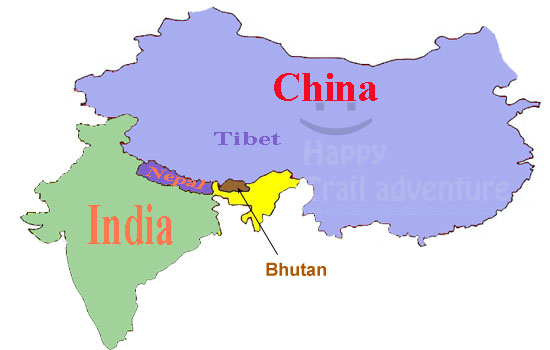China seeks to build a $3 billion industrial park in Jhapa. Nepal is a $20 billion economy. That would be a significant move.
America built infrastructure in Europe. But America has not done the same in Asia, Africa, Latin America. It is racism, pure and simple. America has chosen to destroy trillions of dollars over the decades but has refused to build infrastructure in Mexico.
You can't complain about that and also say, why is China wanting to build an industrial park in Nepal! Why does China want to link Chennai and Delhi with a bullet train? The Chinese are not even trying to be kind. They just mean to do business.
My guess is China feels for India's north-east, the same way Delhi feels for Madhesh. It is a cultural affinity thing. It is so very true that India's north-east is so far left behind. Modi feels the same.
China's interest in Jhapa is not territorial. I think China knows it can not set up the same in India, so they want to do it in Jhapa, which is as close as it can possibly get to that north-east region. China's interest is not Oli or Sitaula. China is interested in India's north-east. And it is not a military interest. This is the 21st century. Nobody in the region is hoping to gain any new territory. China is interested in seeing India's north-east doing well.
I am for building that industrial park. I am also for the bullet train.
Perhaps Madhesh should help the idea of building a bridge between India and China and go for this three state map. How can you be between the second and third largest economies in the world, and be so poor? Because you are not busy building a bridge between them.
Resolution Through Honest And Respectful Dialogue
Nepal: A Total Political Disaster
America built infrastructure in Europe. But America has not done the same in Asia, Africa, Latin America. It is racism, pure and simple. America has chosen to destroy trillions of dollars over the decades but has refused to build infrastructure in Mexico.
You can't complain about that and also say, why is China wanting to build an industrial park in Nepal! Why does China want to link Chennai and Delhi with a bullet train? The Chinese are not even trying to be kind. They just mean to do business.
My guess is China feels for India's north-east, the same way Delhi feels for Madhesh. It is a cultural affinity thing. It is so very true that India's north-east is so far left behind. Modi feels the same.
China's interest in Jhapa is not territorial. I think China knows it can not set up the same in India, so they want to do it in Jhapa, which is as close as it can possibly get to that north-east region. China's interest is not Oli or Sitaula. China is interested in India's north-east. And it is not a military interest. This is the 21st century. Nobody in the region is hoping to gain any new territory. China is interested in seeing India's north-east doing well.
I am for building that industrial park. I am also for the bullet train.
Perhaps Madhesh should help the idea of building a bridge between India and China and go for this three state map. How can you be between the second and third largest economies in the world, and be so poor? Because you are not busy building a bridge between them.
Resolution Through Honest And Respectful Dialogue
Nepal: A Total Political Disaster


